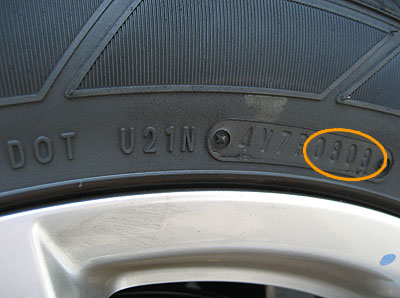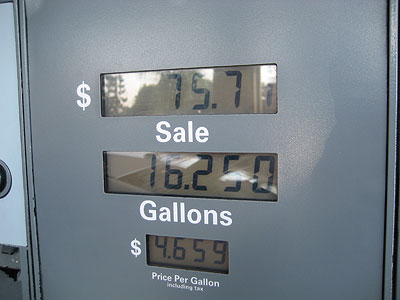This guide is meant to show you through the auto leasing process. I put this together based on my past experiences with leasing. Some experiences were good, others were less than perfect. Overall, I learned a lot about the leasing process and I think these recommendations will have a positive impact on your leasing experience. If I missed anything or if you disagree with some of my steps, please feel free to leave a comment.
Finding the Car
I usually start my research by visiting Edmunds.com and CarsDirect.com to get model/trim/options/pricing information about the car I intend to lease. You need to know exactly what you want because each option can change the price dramatically. CarsDirect.com does a better job letting you pick the correct combination of options for a specific trim.
Get Your Credit Score. Knowing your credit score is important because it qualifies you for the lowest money factors. Typically, I let my dealer know that my credit score is “XYZ” and I am looking for car “ABC”. Telling the dealer your credit score informs the dealer in advance that you are prepared to make a deal and you aren’t wasting their time negotiating. Since you don’t want your credit run multiple times from dealer-to-dealer, finding out ahead of time will keep your credit score from getting hit with too many inquiries (personal inquiries do not hurt your credit). Typically, I don’t even deal with dealers that request to run your credit before working with you or to get a test drive. You let them run your credit ONLY when the negotiation is complete and you are ready to begin paperwork. If you credit is less than perfect, leasing is not for you because you cannnot qualify for the lowest rates. In some cases, you won’t even qualify at all. Lease loans usually have stricter approval guidelines than purchasing loans.
You can use the following credit services to check your credit scores:
In my experience, most dealers I have worked with have used Experian or TransUnion credit scores. However, I recommend checking all three if you haven’t done so in a few years.
Locating a Dealer. Once you are set on the car, you have a couple of options. You can go to the manufacturer’s web site to search for all local dealers or use third-party quote systems like TrueCar.com or Edmunds.com to find local dealers. I personally prefer using TrueCar.com because it provides excellent data which is crucial when negotiating your lease.
Email or Call Dealers, Do Not Visit Dealerships unless you are just doing a test drive. Ideally, you want to email (since the process will then be in writing) your dealer to locate the car with the colors/options you want, let them know the term you want (months and miles per year), then ask for the following:
- MRSP (to make sure it doesn’t have ‘extras’ on it).
- Sale Price (start with invoice, or $500 below invoice and go from there)
- Money Factor
- Residual Value
- Acquisition/Bank Fee
- Dealer Doc Fee
- Other Fees (such as DMV, tire, etc…)
- Is there a disposition? Gap coverage? (these are important things to know!)
- Taxes (depending on which state you live in, find out if you have to pay those up front and/or if you need to pay for the entire car or just the depreciation)
Once you have those numbers, you can calculate your own payments to see if there are any discrepancies between your numbers and theirs. If you have never used my RWG Lease Calculator, you may want to read up on my “How To” post.
If the payments are still higher than you like, ask for the option to make “multiple security deposits” or MSDs. You basically pay security deposits to lower the Money Factor. This will lower the interest paid on your lease but increase your up-front costs. The good news is that you will get that money back at lease-end. If the numbers are still not to your satisfaction, try having the dealer thrown in some free oil changes to help you offset the costs. Now remember, if you trade-in or sell your car before your lease is up, you will LOSE your MSDs! If you put MSDs down, you better make sure you wait until your lease term ends.
Only work with dealers that are up front with you. A pleasant leasing experience is worth something, believe me. It will make you feel better bringing the car in for service and you won’t feel angry driving around in your car because you feel you got ripped off.
Avoid “All-In-One” Quotes. By those I mean “$1999 down, $399/month” type of quotes…the ones the dealers love to quote you. You want to avoid those because it’s easy to start losing track of what you’re actually paying for since everything is bundled and nothing is itemized. If this seems like nit-picking, it is, but you must realize that for every $100 paid in bogus charges, you are doing so with interest (and maybe even tax) if you roll it into your lease payments. Experienced lessees can take the “All-In-One” approach if they have already pre-calculated their payments and know what to expect.
The Numbers look Good, Now What? If you haven’t gone in for a test drive, go ahead and schedule a visit to your dealer. You will probably want to visit the person you’ve been dealing with via email, that way, he or she will already know you and won’t go into the “sales-mode”, thus making your test drive more enjoyable.
Got a Trade-In? If you do, negotiate it after the new car and keep it separately. I usually use this as a “deal-breaker” if the offer isn’t good enough (to see if they will bump out the trade value to make a sale). If you don’t like the offer, remember you can always get it appraised elsewhere or sell it on your own. You can get a good idea as to how much your trade is worth to a dealer by going to Edmunds.com and appraising your car at “GOOD/AVERAGE” condition to get a more “realistic” idea of the value of your car. If you are still financing your car and the offer is lower than the balance of your loan, you will have to pay the difference. If its more than your loan, the dealer will either give you the option to apply it to your new car or cut you a check (I generally prefer the check). If you are trading in a lease, the process is similar. The only difference is that you need to find out what your “PAYOFF” is from your bank and see how close the dealer’s offer comes to it. If your leased vehicle is a popular model, has low miles and is in great condition, you could get some money back.
What Should I Pay Up Front/At Signing? I normally advise people to pay the 1st Month Payment, Acquisition/Bank fee, DMV fee, Doc fee and Tire Tax (Some states will ask for the sales tax to be paid upfront instead of monthly). Sometimes you may be assessed other fees, so double check and make sure they aren’t bogus. Try not to put any money towards cap cost reduction, after all, this is a lease. In the event of an total loss accident or theft, you could lose a significant part of all the money you have put down (or all of it).
Beware of the Finance Guy/Gal. The Finance Guy/Gal is the dealer’s last ditch effort to sell you stuff you may or may not need. Seriously, do you really need anything more than the standard bumper-to-bumper warranty on a lease? You don’t need Lo-Jack on a lease, specially since most leases have GAP coverage.
Make sure you READ the papers BEFORE you sign. You got time, after all you negotiated online before you showed up to the dealership, so READ, make sure the numbers are correct and ask questions. Once you sign, the deal is binding by those terms.


